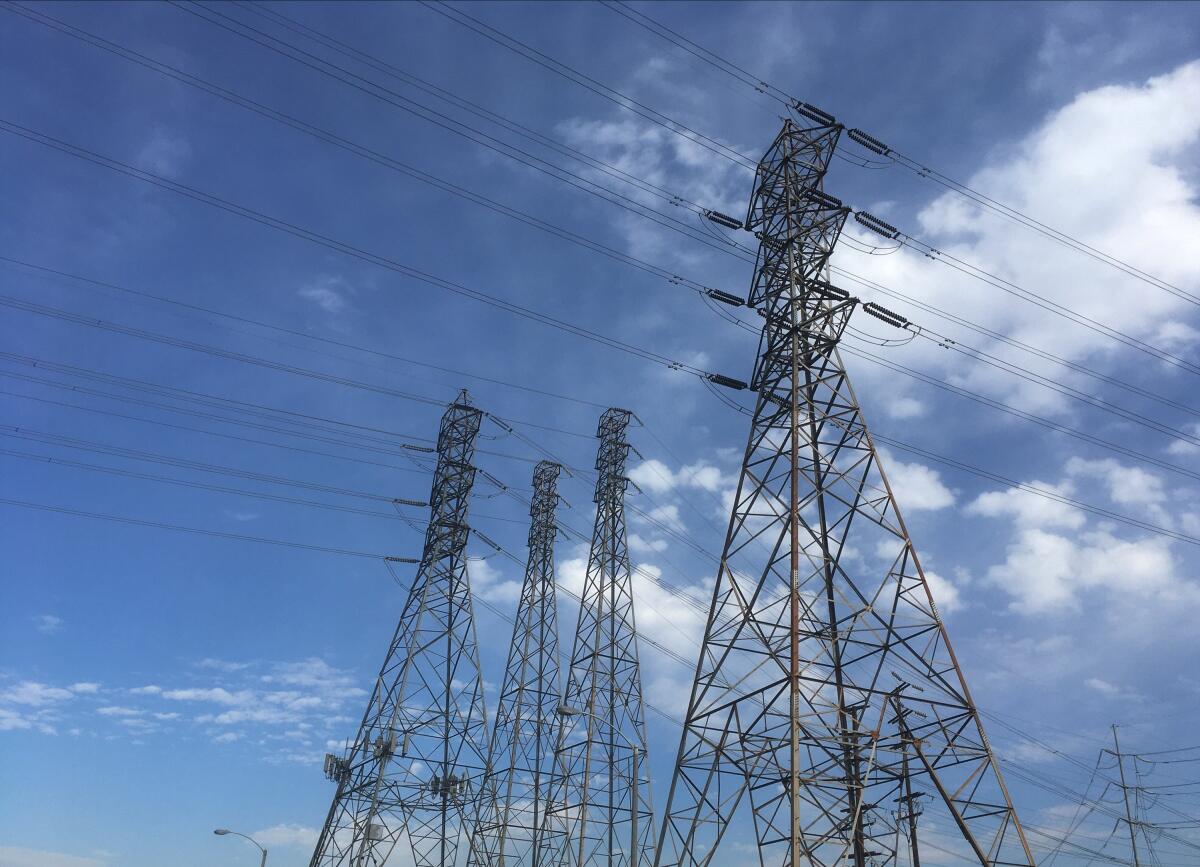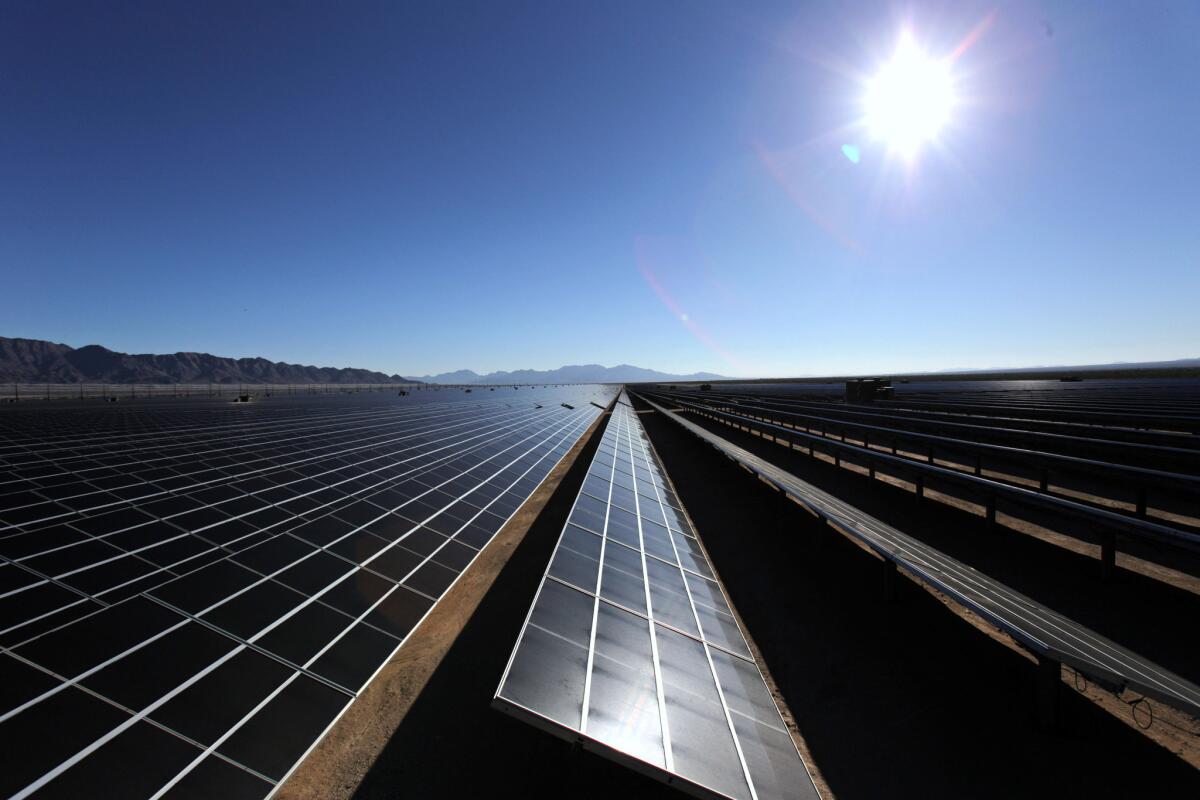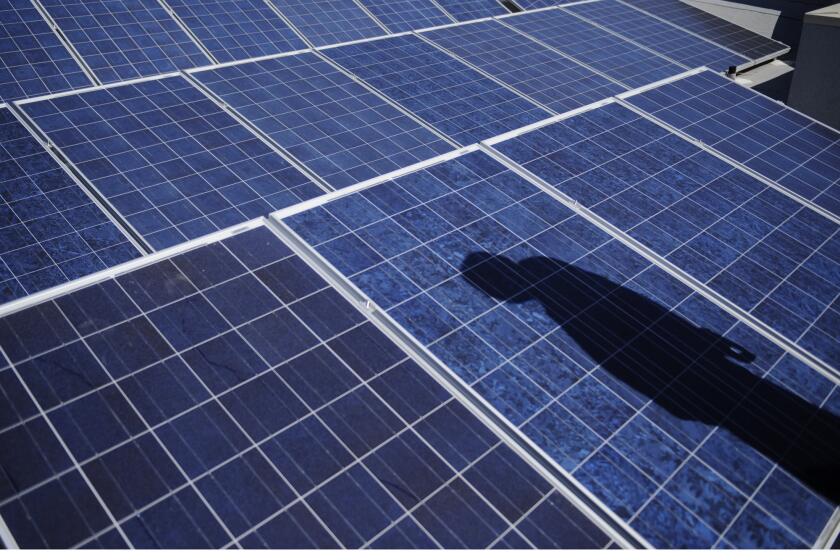What caused California’s rolling blackouts? Climate change and poor planning

California suffered its first rolling blackouts in nearly 20 years because energy planners didn’t take climate change into account and didn’t line up the right power sources to keep the lights on after sundown, according to a damning self-evaluation released Tuesday by three state agencies.
The rotating power outages didn’t last long and affected only a small fraction of the state’s 40 million people. Just under half a million homes and businesses lost power for as little as 15 minutes and as long as 2½ hours on Aug. 14, with another 321,000 utility customers going dark for anywhere from eight to 90 minutes the following evening.
But officials should have been prepared for the climate-driven extreme heat that caused electricity demand to soar and briefly left the nation’s largest state without sufficient power supplies, the state’s Energy Commission, Independent System Operator and Public Utilities Commission acknowledged in a preliminary “root cause analysis” demanded by Gov. Gavin Newsom.
The immediate cause of the power shortages was the heat storm, which saw California experience four of its five hottest August days in the last 35 years, the analysis found. Temperature records were shattered across the American West, limiting the Golden State’s ability to make up for its energy deficit by importing electrons from other states.
Record heat. Raging fires. What are the solutions?
Get Boiling Point, our newsletter about climate change, the environment and building a more sustainable California.
You may occasionally receive promotional content from the Los Angeles Times.
State agencies failed to adequately plan for that type of heat event despite knowing how quickly the world is heating up, the report concluded. They also failed to direct electricity providers to buy sufficient power supplies to cover the evening hours when solar panels go offline. And they created complex energy market mechanisms that masked the inadequacies.
“The combination of these factors was an extraordinary event. But it is our responsibility and intent to plan for such events, which are becoming increasingly common in a world rapidly being impacted by climate change,” wrote Independent System Operator President Elliot Mainzer, Public Utilities Commission President Marybel Batjer and Energy Commission Chair David Hochschild.
Careful planning to ensure adequate power supplies will become even more important as California phases out fossil fuels and moves toward 60% renewable energy by 2030 and 100% climate-friendly energy by 2045, as required by state law.
Officials have consistently said that intermittent power sources such as solar panels and wind turbines didn’t cause the rolling blackouts. But gas-burning power plants that can fire up when the sun isn’t shining or the wind isn’t blowing have been shutting down in recent years, and California has largely failed to replace them with cleaner alternatives such as lithium-ion batteries.
State officials say they’ve been working to get more of those clean resources built but were caught off guard by the intensity and region-wide nature of the August heat wave. California nearly experienced more rolling blackouts over Labor Day weekend.
“Our planning processes may have been a year or two off on when we needed to have the resources available,” said Ed Randolph, director of the Public Utilities Commission’s energy division. “We’ll absolutely need more steel in the ground.”

The root cause analysis also faults market mechanisms put in place by the Independent System Operator, a nonprofit corporation that oversees the power grid for most of the state. A program known as convergence bidding, in particular, is meant to help keep electricity prices steady but instead “masked tight supply conditions” during the August heat wave, the analysis concluded.
Another way markets didn’t function as intended: Energy providers collectively under-scheduled the amount of electricity they expected to need. That allowed power plant operators to sell their juice to customers in other states, resulting in thousands of megawatts being exported even as the Independent System Operator warned that rolling blackouts were imminent.
Mark Rothleder, the grid operator’s vice president for market quality and regulatory affairs, said it’s not yet clear which utilities or other energy providers under-scheduled their demand. He said the analysis is preliminary, with more to come later this year.
Supplying enough power on hot summer evenings is one of California’s main challenges. But experts say there solutions.
Loretta Lynch, a former president of the Public Utilities Commission, is skeptical that the root cause analysis tells the full story.
Lynch led the utilities commission during the early-2000s energy crisis, which saw Enron and other corporate power traders take advantage of California ratepayers by manipulating a poorly designed electricity market to drive profits. She’s worried something similar could be happening now, even as the Independent System Operator says its markets are mostly functioning properly.
“The ISO’s preliminary analysis leaves more unanswered questions than answers,” she said in an email.








